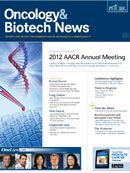Publication
Article
Breast Cancer Survival Rises With Cruciferous Vegetable Intake
Author(s):
Breast cancer survival improved significantly in patients who increased consumption of cruciferous vegetables following diagnosis, a study of Chinese women showed.
Breast cancer survival improved significantly in patients who increased consumption of cruciferous vegetables following diagnosis, a study of Chinese women showed.
During a median follow-up of 5.3 years, cruciferous vegetable consumption had a dose-dependent impact on the hazard rate for overall mortality, breast cancer—specific mortality, and non–breast cancer mortality. The magnitude of the risk reduction ranged as high as 58%.
“Women who consumed large quantities of cruciferous vegetables tended to be younger and healthier, but after controlling for those differences and a variety of other factors, the vegetable consumption remained significantly associated with survival,” said Sarah Nechuta, PhD, MPH, an epidemiologist at Vanderbilt University School of Medicine in Nashville, Tennessee, who presented the data at the 2012 AACR Annual Meeting.
Metabolites of cruciferous vegetables (eg, broccoli, cauliflower, cabbage, greens) include several bioactive substances shown to have anticancer properties. Examples include indoles and isothiocyanates. While studies have shown that increased consumption of the vegetables is associated with a reduced risk of developing breast cancer, limited information exists regarding the influence on cancer recurrence, progression, and survival.
Nechuta and colleagues in Shanghai examined the association between cruciferous vegetable consumption and outcomes in breast cancer survivors. Data for the analysis came from the Shanghai Breast Cancer Survival Study, a cohort study involving almost 5000 women with stages I-IV breast cancer.
The final analysis comprised 4886 women aged 20-75 years. All study participants enrolled within 6 months of breast cancer diagnosis.
Investigators assessed consumption of cruciferous vegetables (g/day) at baseline and after 18 and 36 months. Information was collected by means of in-person interviews and medical records. The primary outcomes were breast cancer recurrence, cancer-specific mortality, and total mortality.
The analysis occurred after 707 study participants had died, including 562 breast cancer— related deaths. The average daily consumption of cruciferous vegetables increased from 62.5 g at baseline to 102.1 g at 18 months and 133.8 g at 36 months.
Investigators stratified the study population into quintiles of cruciferous vegetable intake and compared outcomes, using the lowest quintile of consumption as the reference. At 36 months after diagnosis, the mortality hazard ratio ranged from 0.74 for women in the second quintile to 0.42 in the fifth quintile. Each difference was statistically significant from the reference group, as was the trend analysis (P <.01).
The analysis showed a similar pattern for breast cancer—specific mortality, ranging from 0.92 to 0.58. Only the two highest quintiles were significantly different from the reference group. The overall trend remained significant (P <.01).
Analysis of non—breast cancer mortality yielded a 55% reduction in the hazard ratio among women in the fifth versus first quintile of cruciferous vegetable consumption.
With respect to breast cancer recurrence, only the third quintile differed significantly from the reference, but the hazard ratio was lower in all four of the higher quintiles. The trend also favored increased consumption of cruciferous vegetables (P = .04).
Nechuta and colleagues offered several caveats about extrapolating the data to North American women. Consumption of cruciferous vegetables is much higher among Chinese women. Moreover, the types of cruciferous vegetables commonly consumed in China differ from those favored in the United States. Levels of bioactive compounds are influenced by the amount and type of cruciferous vegetables consumed.
Finally, host/genetic factors might also influence the metabolism of cruciferous vegetables and the effects of the bioactive compounds.
Nechuta S, Lu W, Cai H, et al. Cruciferous vegetable intake after diagnosis of breast cancer and survival: a report from the Shanghai Breast Cancer Survival Study. Presented at the American Association for Cancer Research Annual Meeting; March 31-April 4, 2012; Chicago, IL. Abstract LB-322.










